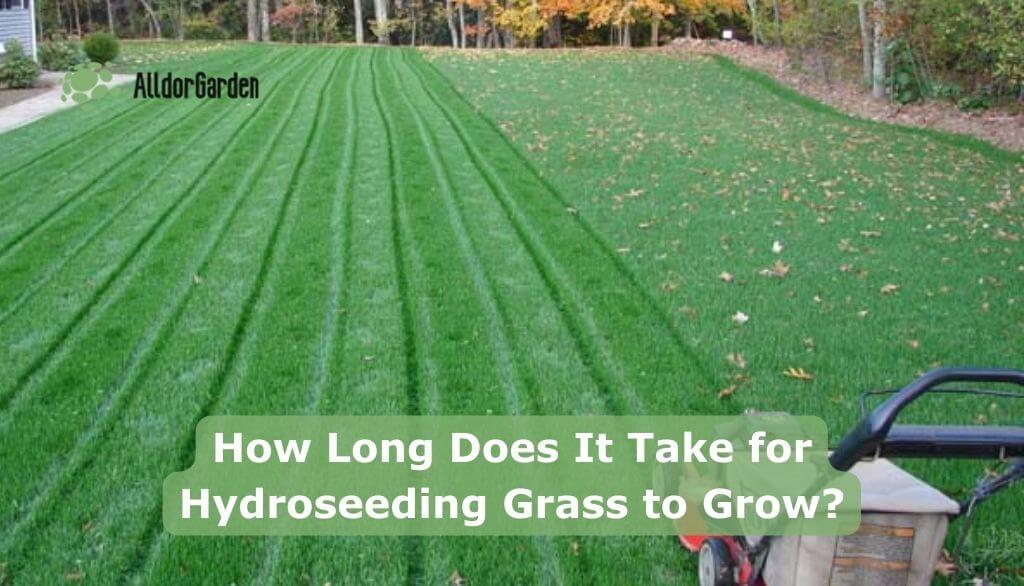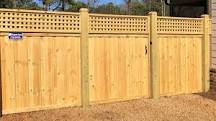Hydroseeding is a popular method for planting grass that involves spraying a mixture of seed, fertilizer, and mulch onto the soil. This method is preferred over traditional seeding or sodding because it offers faster and more uniform growth, reduced erosion, and improved soil quality.
But how long does it take for hydroseeded grass to grow? In this blog post, we will explore the timeline for hydroseeding growth and the factors that affect it.

What Is Hydroseeding?
Hydroseeding is a planting technique that involves spraying a mixture of seed, fertilizer, and mulch onto the soil. This method is preferred over traditional seeding or sodding because it offers faster and more uniform growth, reduced erosion, and improved soil quality.
Hydroseeding is commonly used for large areas such as residential lawns, golf courses, athletic fields, and roadside embankments. The process involves mixing the seed, fertilizer, and mulch in a tank and then spraying the mixture onto the soil using a hose and nozzle. Overall, hydroseeding is an efficient and effective way to establish a healthy, lush lawn.
Why Hydroseeding is the Smart Choice for Your Lawn?
Hydroseeding offers many advantages over traditional grass planting methods. Unlike traditional seeding or sodding, hydroseeding provides a fast and efficient way to establish a healthy lawn. The mixture of seed, fertilizer, and mulch is evenly distributed, allowing for more uniform growth and reduced erosion.
Additionally, the mulch acts as a protective layer, retaining moisture in the soil and promoting healthy root development. Overall, hydroseeding is a smart choice for those who want to quickly and effectively establish a beautiful lawn.
Factors Affecting Hydroseeding Growth
Several factors can affect how long it takes for hydroseeded grass to grow. These include:
- Soil Type: Different types of soil have varying levels of nutrients, drainage, and pH levels. Soil that is rich in nutrients and has good drainage will promote healthy growth.
- Weather Conditions: Temperature, rainfall, and sunlight can all affect the growth of hydroseeded grass. Ideal conditions for growth include moderate temperatures, regular rainfall, and plenty of sunlight.
- Type of Grass: Different types of grass have varying growth rates and requirements. Some grasses may take longer to grow than others, so it’s important to choose a type of grass that is well-suited to your climate and soil conditions.
The Timeline for Hydroseeding Growth
Stage 1: Germination (5-10 days)
The first stage of hydroseeding growth is germination. During this stage, the grass seed begins to sprout and grow roots. This usually takes 5-10 days, depending on the type of grass and the environmental conditions. During this stage, it’s important to keep the soil moist to promote healthy growth.
Stage 2: Blade Growth (10-21 days)
The second stage of hydroseeding growth is blade growth. During this stage, the grass blades begin to emerge and become visible. This usually takes 10-21 days, depending on the type of grass and the environmental conditions. During this stage, it’s important to continue to keep the soil moist and to avoid mowing the grass until it has reached a height of at least 3 inches.
Stage 3: Root Development (21-28 days)
The third stage of hydroseeding growth is root development. During this stage, the grass roots begin to grow deeper into the soil and establish a strong foundation. This usually takes 21-28 days, depending on the type of grass and the environmental conditions. During this stage, it’s important to continue to keep the soil moist and to avoid heavy foot traffic or other activities that could damage the grass.
Stage 4: Maturity (60-90 days)
The final stage of hydroseeding growth is maturity. During this stage, the grass has reached its full height and density, and is ready for regular maintenance such as mowing and fertilizing. This usually takes 60-90 days, depending on the type of grass and the environmental conditions. During this stage, it’s important to continue to provide proper maintenance to ensure the grass remains healthy and vibrant.
Caring for Hydroseeded Grass
Maintaining hydroseeded grass is essential to ensure it grows properly and remains healthy. One of the most important maintenance requirements is watering. During the first few weeks after hydroseeding, it’s important to keep the soil moist to promote healthy growth.
Fertilizing is also important, as it provides the necessary nutrients for the grass to thrive. It’s recommended to fertilize at least twice a year, in the spring and fall. Mowing should be done once the grass has reached a height of at least 3 inches, and should be done regularly to promote healthy growth and prevent weeds from taking over.
Additionally, it’s important to avoid heavy foot traffic or other activities that could damage the grass. By following these maintenance requirements, you can ensure that your hydroseeded lawn remains lush, healthy, and vibrant.
Hydroseeding Costs
Hydroseeding is an efficient and effective way to establish a beautiful lawn, but it’s important to understand the costs associated with this method. The cost of hydroseeding can vary depending on several factors, such as the size of the area being seeded, the type of grass used, and the quality of the materials. Generally, the cost of hydroseeding ranges from $0.10 to $0.25 per square foot.
Additionally, labor costs can add to the overall expense, with the cost of professional installation ranging from $500 to $1,500 for an average-sized lawn. Maintenance costs, such as watering, fertilizing, and mowing, should also be factored into the overall investment. While hydroseeding may require an upfront investment, it offers many long-term benefits, such as reduced erosion, improved soil quality, and a more uniform and healthy lawn. By understanding the costs associated with hydroseeding, readers can determine if it’s a viable option for their needs and budget.
Hydroseeding vs. Seeding vs. Sodding
While hydroseeding is a popular method for establishing a lawn, there are other options available, such as seeding and sodding. Seeding involves spreading grass seed directly onto the soil, while sodding involves laying down pre-grown grass. Each method has its pros and cons, and the choice largely depends on personal preference and budget.
Seeding is the most cost-effective option, but it can take longer for the grass to establish and requires more maintenance in the early stages. Sodding, on the other hand, provides an instant lawn, but it’s also the most expensive option and requires careful handling to ensure proper installation.
Hydroseeding offers a middle ground between seeding and sodding, providing faster and more uniform growth than seeding, and a lower cost than sodding. Additionally, hydroseeding can be customized to the specific needs of the lawn, with the ability to mix in a variety of grass types and other additives, such as fertilizer and mulch.
Overall, the choice between hydroseeding, seeding, and sodding largely depends on personal preference and budget. Hydroseeding offers a fast and efficient way to establish a healthy lawn, while seeding and sodding provide alternative options for those with different needs and budgets. It’s important to research each method and consider the pros and cons before making a decision.
FAQs
How Long Before You Can Walk On Hydroseed?
How Long Does It Take for Hydroseed to Fully Mature?
How Often Does Hydroseed Need to Be Watered?
How Can I Make My Hydroseed Grow Faster?
Conclusion
Hydroseeding is a great option for those who want to quickly establish a lush, healthy lawn. the timeline for hydroseeding growth can vary depending on several factors, such as soil type, weather conditions, and the type of grass used.
Generally, it takes around 5-10 days for the grass to begin germinating, 10-21 days for the grass blades to emerge, 21-28 days for the roots to develop, and 60-90 days for the grass to reach maturity. Following proper maintenance procedures, such as watering, fertilizing, and mowing, can help ensure that the hydroseeded lawn remains healthy and vibrant.
Hydroseeding is an efficient and effective way to establish a beautiful lawn, providing faster and more uniform growth, reduced erosion, and improved soil quality. With a little patience and care, you can enjoy a beautiful lawn in no time.



